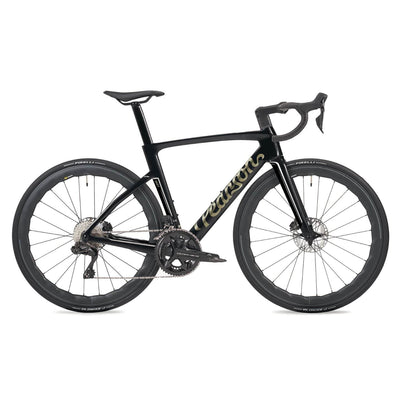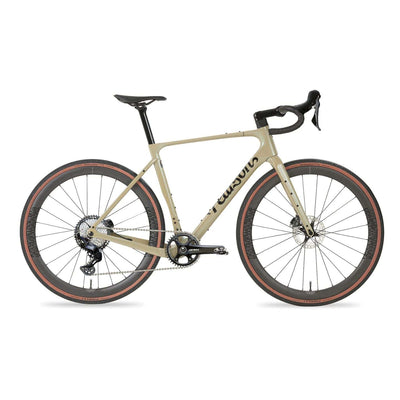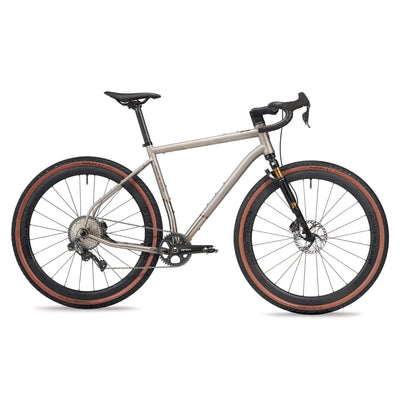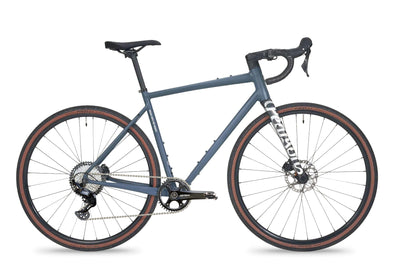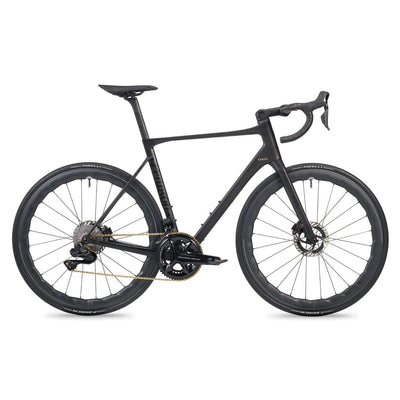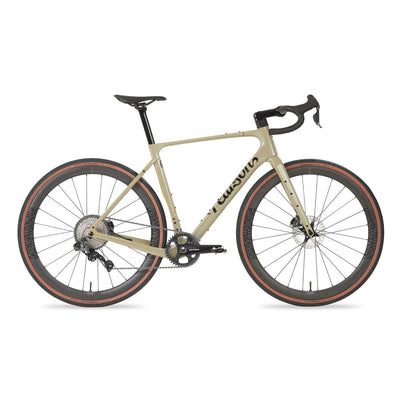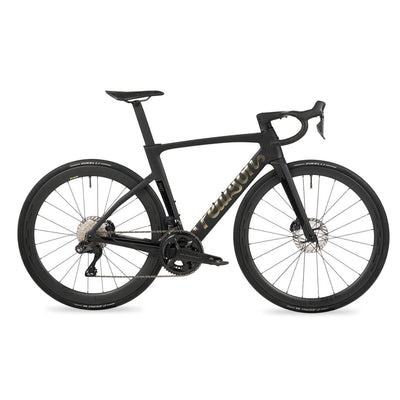A guide to power measurement
For many cyclists, a power meter is an essential piece of equipment to monitor and improve their performance. But even the least expensive power meters cost well over £250 with prices heading up over £1,000. What do you get for your money and what explains that price difference?

The original cycling power meter was developed by German company SRM in 1986. It was quickly taken on by pro riders like Greg LeMond and SRM’s power meters have been a feature of the pro peloton ever since.
SRM boasts its high accuracy and is still regarded highly. Its meters and the head unit you’ll often see on shots of pro bikes are expensive though - power meter chainsets start at over €1,500 and its Powercontrol 8 computer is priced at €780.
Other companies have looked to reduce the entry cost for power measurement with far cheaper options.
How and where is power measured?

Power meters can be bought which measure your power output either via the pedals or different parts of the chainset - the crank arms, bottom bracket spindle or the chainrings. SRAM has now discontinued selling the PowerTap G3 power meter, which was an exception as it measured power at the rear hub.
Power is measured via a series of strain gauges placed in or on the component measured, which detect small deflections caused by pedalling, which software in the meter combines with cadence data and converts into a power output figure. This is transmitted wirelessly to a head unit or a cycle computer via either the Bluetooth Low Energy or ANT+ protocol - many devices now support both.
Most power meters have quoted accuracy of 2 per cent or better, although in some cases you’ll need to perform a short recalibration periodically to ensure that measurements don’t drift. Other power meters claim to compensate for external factors like temperature change that can cause drift. SRAM’s meters, for example, can be set to recalibrate themselves automatically as you ride.
Different brands’ power meters run on a range of battery technologies. Many have internal batteries that can be recharged from an external power source, usually via a USB cable although often this has a special shaped plug at the power meter end rather than a standard mini USB one. You may need an extra-long cable to reach your power meter - it’s something that is often included in the package.
Other power meters use non-rechargeable coin cells or AAA batteries. Rechargeable internal batteries have the advantage that it’s easier to keep your power meter charged up, there’s no fiddly battery changing needed and less risk of seals leaking. You won’t need to keep a stock of batteries either.
Pedals or chainset-based measurement?

If you’re swapping between bikes frequently, a pedal-based power meter like the Favero Assioma might be a better bet than a system that works on the crank arms or spindle. It’s easier to swap between bikes and most have done away with the awkward set-up requirements like specific torque values which older systems needed for accuracy.
On the other hand, pedals are more prone to damage than a chainset and building batteries and electronics into pedals can make these systems heavier than other options. Most pedal-based power meters limit you to using Look road cleats too, although Wahoo is about to launch a Speedplay power meter and Favero offers a Shimano-compatible spindle for its Assioma power meter which can be installed into a Shimano SPD-SL pedal body.
Garmin has added versatility to its latest Rally power meter, which has interchangeable pedal bodies which allow you to swap bodies to use it with either Shimano SPD-SL road cleats or two-bolt SPD cleats in addition to Look.
Some crank based systems like 4iiii and Stages are very lightweight, as they just add a pod with strain gauges to the back of the crank arms and you can use them with whichever pedal system you prefer. They’re also relatively easy to swap between bikes by changing your crank arms.
As with pedal-based systems, you can purchase a single-sided version or dual sided crank-based meters. It’s worth noting that some systems housed in the chainset like SRM’s will only give you combined power, not dual sided.
Shimano and SRAM both offer in-series chainset power meters, with the latest 12-speed Dura-Ace and Ultegra groupsets both including dual side power meter options, as do 12-speed SRAM Red and Force.
Likewise, systems housed in the bottom bracket spindle, like the Rotor 2INpower, don’t add much weight and are well shielded from weather and damage, although you’ll have to look out for bottom bracket compatibility with your bike. If you decide to change bikes, compatibility with a new frame might be an issue.
How does an entry-level power meter work?

At the lower priced end of the market, you’ll usually find single sided power measurement at the left crank or pedal. It’s cheaper because there are fewer strain gauges needed and no need to ensure that there’s comparably between left and right side measurements. The device’s software just doubles the measured numbers to get an estimated power number.
This works fine if your power outputs from your left and right legs are similar, but can’t identify pedalling imbalances, so you don’t have the tools to work on these. I’ve found that my left leg gets tired quicker than my right, so my left:right balance changes over a longer ride, for example. Some riders find the same thing when they put in harder efforts or climb.
If this happens, a single sided power meter will either overestimate or underestimate your power output.
To make it easier to get a foot on the power measurement ladder, some brands like Garmin and Look/SRM sell a single sided device that can be converted to two sided measurement by purchasing an upgrade kit at a later date.
SRAM has staked a claim at the budget end of the market with its latest Rival eTap AXS groupset, which includes the option of a single sided power meter chainset for around £350 or a left crank upgrade for £250, making it one of the cheapest options available.
We sell the similarly priced Stages left crank power meter, which is ultra-light at just 15 grams and comes pre-installed on a replacement crank arm. Stages’ credentials are shown by its regular use by the pros, with its dual sided meter commonly ridden in the Grand Tours.
A similar ultra-light power meter with a pod attached to the left crank arm is sold by 4iiii, who also have a dual sided option and claim high accuracy of +/- 1 per cent.
What does a more expensive power meter add?

Buy a more expensive power meter and you’ll usually get separate left and right side measurements, which as we’ve mentioned above, lets you identify and work to rectify pedalling imbalances and ensure that these don’t lead to over- or underestimates of your power output. It also means that the overall power data you get will be more accurate, as it’s not an estimate based on one leg only.
Often you’ll get other data like pedal stroke analysis and torque effectiveness (how much of your effort is actually going into moving the bike forward), which may be lacking in cheaper options and which, again, give you a basis to improve your technique. The Favero Assioma power meter even detects when you’re in the saddle or out of it.
There may be more analysis software included with the meter too, although it’s easy to get overloaded with data, as there’s so much produced by even a cheaper meter.
What does power data do for you?

Having power data isn’t just about bragging rights. If you’re serious about upping your cycling game, it’s an essential metric of your performance and training status.
That’s because power measurement is unaffected by external factors like temperature and wind and gives a better indication of how hard you’re working than heart rate, although combining the two measurements allows you to get even deeper analysis.
Garmin Edge computers, for example, use power and heart rate data to estimate your VO2 Max and functional threshold power (FTP) values, allowing you to keep track of changes over time and identify the effects of your training. It’s a much less invasive and far cheaper approach than the lab-based tests which it mimics.
In competition, knowing your FTP can help you gauge your efforts, so that you put in your best performance without risking blowing up, while in training you can use your power zones to structure your training better to develop different aspects of your performance, like your aerobic and anaerobic capacity. It also helps you to ensure that your recovery rides are at a low enough intensity to be effective.
Power measurement also lets you keep a more accurate track of your calories burnt if you’re keeping tabs on your energy input and output. Power data is also used as an input to your training stress score in apps like Strava and TrainingPeaks, so you can monitor your training load and periodise your training blocks effectively.
Read next: What Happens During A Bike Fit >


